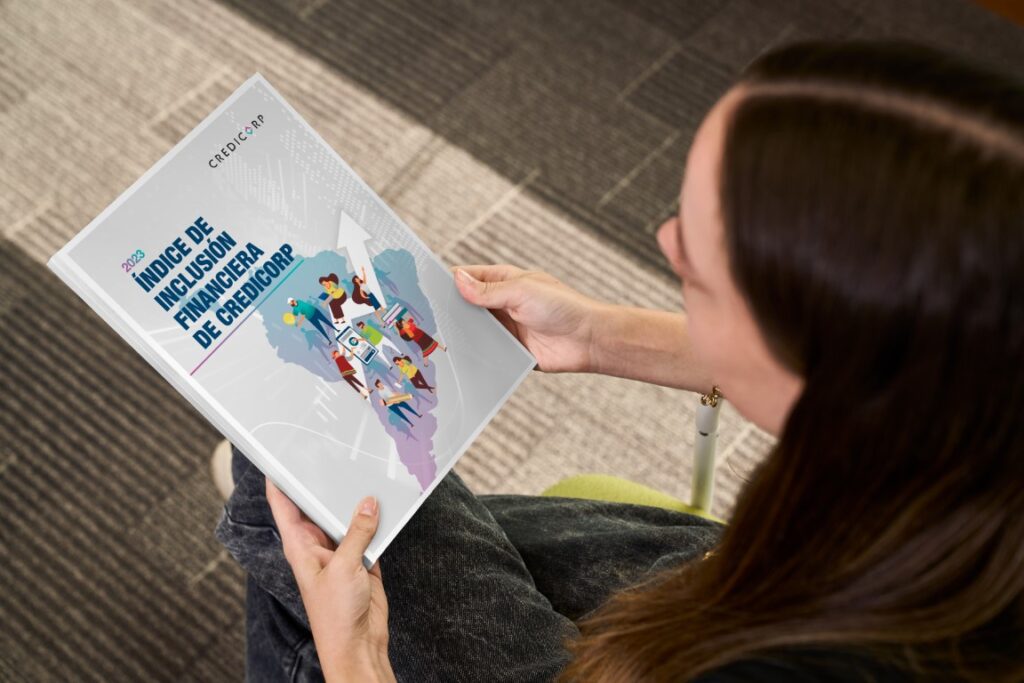- Credicorp, holding financiero del que forma parte BCP y Mibanco, presentó un estudio en donde se muestran los avances en inclusión financiera en los departamentos de Lima Metropolitana, Arequipa, Lambayeque, Piura, La Libertad, Cusco, Junín, Áncash, Cajamarca y Puno.
- Metropolitan Lima leads the ranking of financial inclusion with 31% of people in the “reached” level and Arequipa is expected to achieve the highest level of growth of all macroregions.
Lima, March 2024.- To identify challenges and make strategic decisions to promote financial inclusion in the country, Credicorp hired Ipsos for the third consecutive year to develop the Financial Inclusion Index (FII). The second edition of the sub-study in Macroregions was born of FII and provides information on the level of financial inclusion in different regions of Peru.
Results were tabulated with information from a survey of more than 5000 Peruvians over the age of 18 and focused on dimensions of access, use and the perceived quality of products and financial services to develop a complete picture of a given territory. The assessment rated 10 departments in the macroregions of the northern coast, southern highlands, south and center, and the jungle. A ranking was generated with the findings, based on a scale from 0 to 100 where the highest number is the highest level of inclusion:
- 1st place: Lima Metropolitana (49.1/100)
- 2nd place: Arequipa (46.2/100)
- 3rd place: Lambayeque (43.5/100)
- 4th place: Piura (43.1/100)
- 5th place: La Libertad (41.3/100)
- 6th place: Cusco (40.6/100).
- 7th place: Junín (39.7/100).
- 8th place: Áncash (37.8/100).
- 9th place: Cajamarca (35.7/100).
- 10th place: Puno (29.2/100).
Since the first measurement in 2022, Metropolitan Lima has risen 4 points to lead the ranking for the second consecutive year. In this region, 31% of inhabitants are at the achieved level of financial inclusion, which is measured not only by a person’s access to and knowledge of the products offered by the system but also by how he or she uses products and the frequency of the same. The study found that inhabitants of Lima are familiar with an average of 9.54 financial products; are clients at 1.80 entities in the sector; and conduct approximately 12.71 transactions a month.
Arequipa reports the highest percentage of people (40%) who are on their way to obtaining the “achieved” level of financial inclusion. A high proportion of the people surveyed were at the optimum level (27%), second only to Lima. In Arequipa, citizens are familiar with an average of 9 financial products; are clients at 1.73 entities; and conduct an average of 6.87 transactions a month.
These results reflect growth in people’s perception of the utility of digital payment venues. This indicator has grown mainly in Metropolitan Lima (69%), Piura (64%), Arequipa (61%) and Lambayeque (60%). Consequently, the proportion of frequent users of digital wallets and payment applications increased from 49% in 2022 to 625 in 2023. «Sustained growth in possession of mobile wallets is noteworthy, and this venue is one of the main drivers of the transformation that we are witnessing in financial inclusion in the country” ,explained Gianfranco Ferrari, CEO of Credicorp.la transformación que estamos presenciando en materia de inclusión financiera en el país”, explicó Gianfranco Ferrari, CEO de Credicorp.
“With this second measurement in Peru’s macroregions, we are seeking to update our view of the state of financial inclusion. To accomplish this, we disseminate the study on an annual basis to contribute information to drive improvement in public policies and, in line with our purpose, accelerate the changes our society needs,” he added
In summary, this study provides important findings to build strategies to improve the quality of life of the most vulnerable people in different regions of the country. Ensuring that more Peruvians are included in the formal financial system constitutes a major challenge for both educational initiatives at financial entities and in the public sector.
Please find the complete study on our web page at: https://grupocredicorp.com/indice-inclusion-financiera/#estudios
